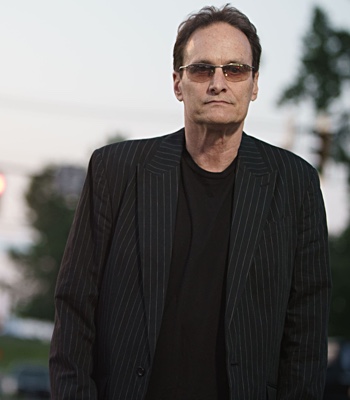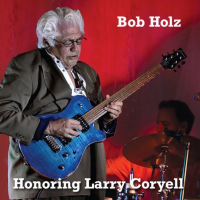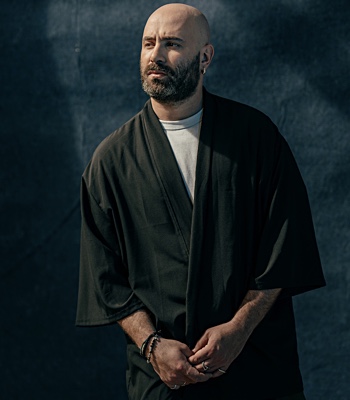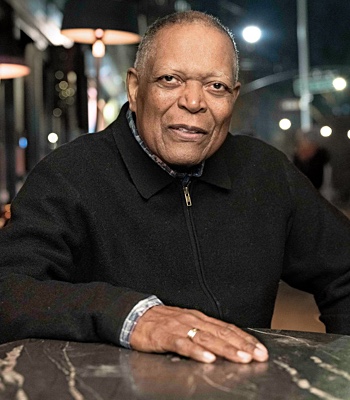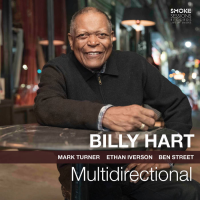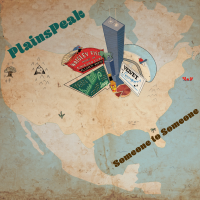Home » History of Jazz Timeline: 1965
History of Jazz Timeline: 1965
In one mammoth swath of recording activity, Coltrane produces Ascension, Om, and Kulu Se Mama. These three large-group recordings feature high-energy collective free improvisaton. (They will later be collected for reissue as The Major Works Of John Coltrane on Impulse!)
 John Coltrane records Sun Ship in August, the final work by his classic quartet
with pianist McCoy Tyner, bassist Jimmy Garrison, and drummer Elvin Jones. November's
Meditations expands his working quartet to a sextet with Pharoah Sanders on
tenor saxophone; Rashied Ali joins Elvin Jones on the drums. (Jones will subsequently
leave the group after complaining he can not hear his own playing; Tyner will leave the
next year.)
John Coltrane records Sun Ship in August, the final work by his classic quartet
with pianist McCoy Tyner, bassist Jimmy Garrison, and drummer Elvin Jones. November's
Meditations expands his working quartet to a sextet with Pharoah Sanders on
tenor saxophone; Rashied Ali joins Elvin Jones on the drums. (Jones will subsequently
leave the group after complaining he can not hear his own playing; Tyner will leave the
next year.)
Trumpeter Miles Davis records E.S.P. (Columbia) with his classic '60s quintet:
saxophonist Wayne Shorter, pianist Herbie Hancock, bassist Ron Carter, and drummer
Tony Williams. The album has a picture of his (then) wife, dancer Frances Taylor, on the
jacket.
Saxophonist Archie Shepp records his Impulse! debut, Four For Trane, with
alto saxophonist John Tchicai, trombonist Roswell Rudd on trombone, bassist Reggie
Workman, and drummer Charles Moffett.
 Vibraphone player Bobby Hutcherson records Dialogue (Blue Note) with
trumpeter Freddie Hubbard, reedist Sam Rivers, pianist Andrew Hill, bassist Richard Davis,
and drummer Joe Chambers.
Vibraphone player Bobby Hutcherson records Dialogue (Blue Note) with
trumpeter Freddie Hubbard, reedist Sam Rivers, pianist Andrew Hill, bassist Richard Davis,
and drummer Joe Chambers.
Ornette Coleman's new trio with bassist David Izenzon and drummer Charles Moffett
records the two volume At the "Golden Circle" Stockholm (Blue Note).
 AAJ Building a Jazz Library: Masterpieces
Herbie Hancock - Maiden Voyage (Blue Note)
Pianist Herbie Hancock's best record adopts a nautical angle, with gentle waves of sound
surrounding strong, forward-sailing melodies. Maiden Voyage relies upon
subtlety, but it features wonderful group interaction and showcases some of Hancock's
finest playing.
AAJ Building a Jazz Library: Masterpieces
Herbie Hancock - Maiden Voyage (Blue Note)
Pianist Herbie Hancock's best record adopts a nautical angle, with gentle waves of sound
surrounding strong, forward-sailing melodies. Maiden Voyage relies upon
subtlety, but it features wonderful group interaction and showcases some of Hancock's
finest playing.
The AACM (Association for the Advancement of Creative Musicians) is formed in Chicago.
Baritone sax player Gerry Mulligan records Night Lights (Mercury) with trumpeter
Art Farmer, trombonist Bob Brookmeyer, guitarist Jim Hall, bassist Bill Crow, and drummer
Dave Bailey. Mulligan also plays clarinet and piano.
Bop composer and arranger Tadd Dameron dies on March 8.
Bill Lear announces the development of eight track tape technology. The following year
Ford offers players as optional equipment on its vehicles, sparking a new listening trend.
Tape player production eventually shifts to Japan.
The classic fuzz box assumes popularity among rock guitarists, including Jimmy Page,
Jeff Beck, Pete Townshend, and Keith Richards (who uses a Gibson Fuzz Box on
"Satisfaction" in 1965). As effects technology develops, jazz players (and even horn
players like Miles Davis) will pick it up for use.
Keyword Search
Disclaimer: Though we have checked our facts, this timeline may contain erroneous information. If you discover errors or omissions, please bring them to our attention.

